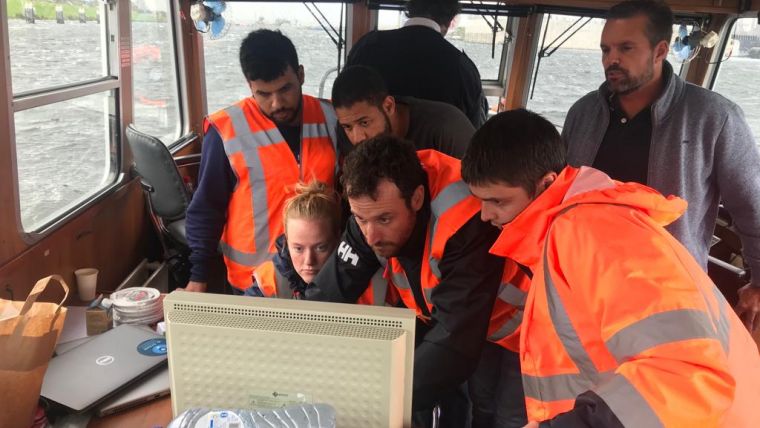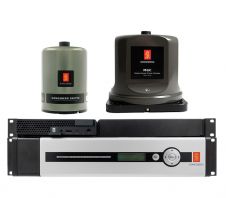More Training, Please!
Looking at the current hydrographic market, an interesting aspect is the continuous search for hydrographic personnel. However, while quite a few of the current hydrographic surveyors obtained their training in the field, this is becoming increasingly difficult; not only due to the increasing complexity of surveying systems, but also because clients require hydrographic surveyors to be certified. At the same time, we are witnessing an ever-increasing outflow of experienced hydrographic surveyors, as the average age of the workforce increases and people retire. What, therefore, can be done to remedy this?
Business Cycle
Both the dredging and the offshore markets seem to depend on economic factors. A personal observation is that fluctuations in the economy seem to translate within a very short time span into similar fluctuations in investments in infrastructure and energy production. Another personal observation (obtained through years of involvement in education) is that investment in personnel seems to directly follow the general business cycle. When a few years ago the market was down and investments were low, many surveyors were laid off. Investment in training also dropped for the remaining personnel. Then, when the market rose again, there was an outcry for more personnel and of course no more time to train those who had stayed.
An interesting question is how to break this cycle. On paper, it should not be that hard. General economics dictate that the best time to invest is when the market is down, supply is ample and demand low. That is when investments are at their ‘cheapest’ and the choice at its largest. However, this economic law does not seem to work all that well in the hydrographic world, probably because, as a service provider (and because of low margins?), we get hit hard and direct with market changes. Or, is it because we fear we might be hit hard and therefore hedge our investments for a better day? I will leave it up to each individual reader or company to decide which is true.
As long as we do not break this cycle, we will always find that we do not have enough qualified personnel when the market improves. One thing that may sway the decision is that people who lose their job during a downturn are usually ‘lost’ to the market. They move on to another career and in general only a few of them return. We therefore lose all the investments that were made.

To make a rough calculation of the investment lost, let’s assume the following. A Cat B education (increasingly required as the minimum standard, see below) takes at least half a year according to the IHO competency standard S5-B. The training cost, based on internet prices for a commercial Cat B course, is between €10,000 and €15,000. This excludes salaries, which easily amount to another €25,000 over the same period. In other words, training a certified surveyor costs between €35,000 and €40,000. At the same time, the work cannot be done by the employee who is in training, easily increasing the costs by another €25,000.
By training when the market is low, we spend less money (no need for a replacement?) or at least do not lose any money. Now, I know that not many companies actually pay the amount of money mentioned above, as they rely on new blood being trained at school. However, the costs simply come from a different pocket. Bear in mind also that the above sum excludes the costs of ‘breaking in’ a new employee, which may take anywhere from a few weeks to a few months, easily adding another €10,000 to the costs, even if training can be avoided and the new employee is immediately available when the market is ready. However, considering the number of emails I receive from companies looking for fresh blood, I would say that this is not the case.
Formal Education
This brings us to formal education. As I said, a hydrographic career did not in the past have to start with a hydrographic education. However, more and more clients require one or more certified hydrographic surveyors on a project. My personal prediction is that this number will only increase in the years to come.
When looking at formal education, we need to consider IHO recognized training. The IHO-FIG-ICA standards of competence (S5 and S8) define two levels of hydrographic courses. One is the Category B (‘Cat B’), aimed at practical surveyors (S5-B) and practical cartographers (S8-B). The other level is Category A (‘Cat A’), aimed more at the research and management level. A Cat B course should take at least half a year; a Cat A course at least a full year.
The S5 and S8 standards further detail what a hydrographic surveyor or cartographer should know and at what level. The standards are revised when required and try to follow developments in the hydrographic field. However, no standard can predict the future and it is up to institutes to follow market trends and augment their training. The IHO S5 / S8 standards describe the minimum rather than the maximum that should be covered.
We see a strong division in the available courses between those ‘in and for the Navy’ and those for commercial hydrography (offshore, construction, dredging). While the primary background of the IHO is the safety of navigation, we see that about half the institutes do not primarily train for safety of navigation but for hydrography for research and economic development. This uses the same tools, but in a different process, and these processes are sometimes hard to reconcile, especially when discussing what is truly relevant. Where the offshore industry may emphasize underwater acoustic positioning, the Hydrographic Offices of the Navy may emphasize harmonic analysis and the construction of nautical charts.
It is not easy to run a hydrographic institute: student numbers are low, and certification requirements are high. Another issue is resources. Survey equipment and software (and a vessel) are major investments that often need to be sponsored in some way. Otherwise, an institute would need to compete with the market to pay for the resources; something which, from an academic point of view, should not be done. From personal experience, I know that the industry is usually heavily involved in this sponsorship, for which institutes should be and usually are very thankful.

Competency Assessment Schemes
Finally, there are people working in the industry without formal training at a Cat A or Cat B recognized institute, but increasingly required to prove their proficiency. Or, some people may have a related certificate that is not recognized in the hydrographic world (i.e. not Cat B or Cat A).
For this group of people, but also for those with Cat B or Cat A training who want to demonstrate their practical proficiency, we see more and more professional accreditation schemes. Some of these are national, while others are recognized by the IHO. One such scheme is that of the International Federation of Hydrographic Societies (IFHS), who recently submitted their Hydrographic Professional Accreditation Scheme (HPAS). Other recognized schemes are already in place in Canada and Australia.
All schemes follow a similar path; those who apply are required to provide proof of academic qualifications (as mapped against the S5 standards). However, even though they need to provide evidence of having acquired all the S5 competencies, they need not have followed a Cat A or Cat B recognized course. They can also prove these competencies through later training or affiliated courses. Often, they need to follow additional courses on specific subjects to fully obtain all the competencies.
Furthermore, depending on the level of recognition sought, they need to supply proof of practical proficiency through logbooks, CVs or survey reports. The sum of academic qualifications and practical proficiency then affords them a recognized level in a certain scheme. Most schemes recognize a level ‘2’, which can be obtained after attending a recognized Cat B course or equivalent set of academic competencies and a certain number of years in the field. There is also a level ‘1’, which requires Cat A or equivalent and more years of experience. HPAS also recognizes a level ‘0’ for those individuals with an outstanding track record in hydrography.
Conclusion
To conclude, as a market we need to think about how we obtain, and more importantly hold onto, our hydrographic professionals. However, there are more ways to achieve qualification: either through a recognized Cat A or Cat B course or through a professional accreditation scheme. Whatever we do, it is important to continue to invest in qualified personnel.


Value staying current with hydrography?
Stay on the map with our expertly curated newsletters.
We provide educational insights, industry updates, and inspiring stories from the world of hydrography to help you learn, grow, and navigate your field with confidence. Don't miss out - subscribe today and ensure you're always informed, educated, and inspired by the latest in hydrographic technology and research.
Choose your newsletter(s)
























